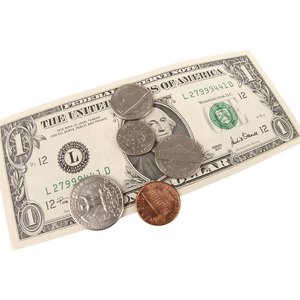
Behind every covered call you write, there's a smiling agent from the Internal Revenue Service waiting for his cut. Each of the three outcomes of a covered call transaction has its own tax treatment, but you handle all three as capital gains or losses. Covered calls normally are stock transactions, but you can write a covered call on many types of financial assets, including bonds and futures.
Covered Call
You write a covered call to earn income. The call gives a buyer the right to purchase 100 shares of the underlying stock at a preset price -- the strike price -- on or before an expiration date. The buyer pays the option price, or premium, to the call writer. If you're the writer, you must deliver the 100 shares if the buyer exercises the call. You write a covered call on shares you already own; otherwise it’s a "naked call." Until the transaction is resolved in one of three possible ways, you don’t recognize the premium income you receive for writing the call.
Scenario 1: Call Expires
The buyer will exercise a call only if it is profitable to do so. Otherwise, the call expires worthlessly. When you first sell the call, you receive a deferred short-term capital gain. Upon expiration of the call, your gain becomes real. For example, If you sell a call for $300 in December 2012 and it expires in February 2013, you book your gain in 2013.
Scenario 2: Buy to Close
Just because you sold the call doesn’t mean you have to wait for it to expire or to be exercised. You can close out your original transaction by buying the same call option on the open market. The call you buy offsets the one you earlier sold, negating both. The difference between the premium you received for selling the call and the premium you later paid for buying the call is your short-term capital gain or loss. You book the gain or loss when you buy the call.
Scenario 3: Call is Exercised
If the call purchaser exercises his option to buy the shares, the options exchange notifies you to deliver them. You already own the shares, so delivery is no problem. On the delivery date, your broker will remove the shares from your account and replace them with the proceeds from the sale. First, you add the premium you received for writing the call to the sale proceeds. Then subtract the amount you paid to buy the underlying shares. Your result is a capital gain or loss. If you owned the underlying shares for more than a year, it’s a long-term capital gain or loss.
Capital Gains Taxes
The IRS taxes short-term capital gains at your marginal tax rate. You generally will pay 20 percent, 15 percent or 0 percent on long-term capital gains, depending on your modified adjusted gross income. Capital losses offset capital gains and up to $3,000 per year of ordinary income. You can carry unused capital losses forward to future years. If your modified adjusted gross income is more than $200,000, or $250,000 for couples, you pay a 3.8 percent Medicare surcharge on the lesser of your investment income, which includes capital gains, and the amount by which your modified adjusted gross income exceeds those thresholds. You report capital gains and losses on IRS Form 8949 and Form 1040 Schedule D.
References
Resources
Writer Bio
Eric Bank is a senior business, finance and real estate writer, freelancing since 2002. He has written thousands of articles about business, finance, insurance, real estate, investing, annuities, taxes, credit repair, accounting and student loans. Eric writes articles, blogs and SEO-friendly website content for dozens of clients worldwide, including get.com, badcredit.org and valuepenguin.com. Eric holds two Master's Degrees -- in Business Administration and in Finance. His website is ericbank.com.

